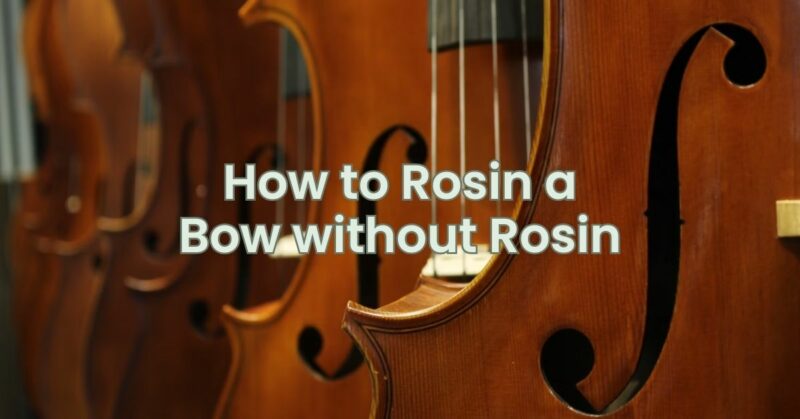Rosin is an essential accessory for string instrument players, as it provides the necessary friction between the bow hair and strings. However, there may be situations where you find yourself without traditional rosin. In such cases, there are alternative methods you can employ to rosin a bow temporarily. In this article, we will explore how to rosin a bow without traditional rosin, ensuring optimal bowing performance in a pinch.
- Using a Candle: One method to create a temporary rosin substitute is by using a candle. Follow these steps:
- Light a candle and let the flame produce a small amount of soot.
- Hold the bow hair slightly above the flame, allowing the soot to accumulate on the hair.
- Move the bow hair back and forth across the flame, ensuring that the soot is evenly distributed.
- Be cautious not to hold the hair too close to the flame or expose it to excessive heat, as it can damage the bow hair.
- Once the soot is applied, gently rub the bow hair with a clean cloth or your fingers to create friction and activate the makeshift rosin.
- Resin Alternatives: If you have access to other resinous materials, they can be used as makeshift rosin alternatives. Examples include pine sap, tree resin, or even certain types of resinous household items. Here’s what you can do:
- Find a resinous material that is sticky or has adhesive properties.
- Rub the sticky substance directly onto the bow hair, applying moderate pressure.
- Work the sticky substance into the hair by moving the bow back and forth or in circular motions.
- Continue rubbing until you achieve a thin, even layer of the sticky material on the hair.
- Sticky Substances: Various household items with sticky properties can be used as temporary rosin substitutes. Here are a few examples:
- Honey or Maple Syrup: Apply a small amount of honey or maple syrup to a cloth or your fingers, and rub it gently onto the bow hair. Be careful not to apply excessive amounts, as it can be challenging to remove later.
- Adhesive Tape: Wrap a small piece of adhesive tape (preferably low-tack or painter’s tape) sticky side out around the bow hair. Move the bow back and forth across the tape to transfer some of its adhesive properties onto the hair.
- Sticky Wax: If available, you can use a small amount of sticky wax (like the wax used for candles) and apply it to the bow hair. Rub it in gently to create friction and increase grip.
Important Considerations:
- These alternative methods should only be used in emergency situations or as temporary solutions. Traditional rosin should be obtained as soon as possible for optimal sound production and bowing performance.
- It is advisable to consult with a music teacher or experienced players before employing these methods, as they may have additional insights or recommendations based on your specific instrument and playing style.
- After using these temporary alternatives, it is important to clean the bow hair thoroughly to remove any residue before applying traditional rosin.
Conclusion: While traditional rosin is essential for optimal bowing performance, in situations where it is unavailable, temporary alternatives can be used as makeshift solutions. Using a candle to create soot or employing resinous materials or sticky substances can provide temporary friction and grip to the bow hair.
Remember, these methods are not intended as long-term replacements for traditional rosin. Obtain proper rosin as soon as possible to maintain optimal sound quality and bowing control. With these temporary alternatives at your disposal, you can continue playing your instrument in a pinch while awaiting access to traditional rosin.


